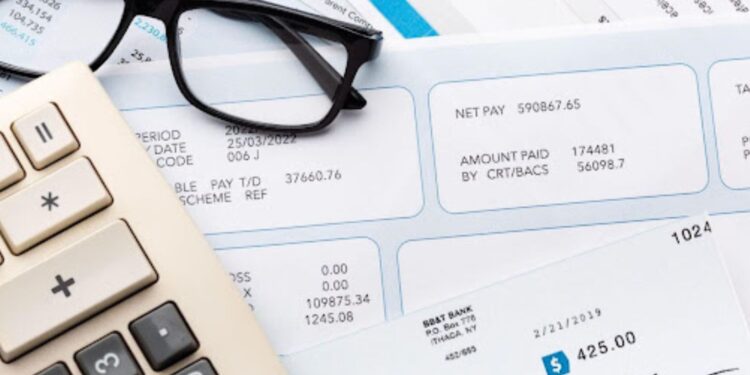The mileage rate for 2025 is one of the most important updates for gig workers, small business owners, and self-employed professionals. For the 2025 tax year, the IRS has set the standard mileage rate at 70¢ per mile for business use, 21¢ per mile for medical or moving (active-duty military only), and 14¢ per mile for charitable driving. These rates apply across all vehicles — gas, hybrid, or electric — and provide a simplified way to deduct vehicle costs. When combined with tools like Everlance, tracking and applying these rates becomes much easier and more accurate.
Why the Mileage Rate Matters in 2025
The mileage rate directly affects how much drivers can deduct at tax time. For Instacart shoppers, delivery drivers, and other gig workers, it’s often the single biggest deduction available.
Key Benefits of the Mileage Rate
- Reduces Taxable Income: Every business mile lowers taxable income by 70¢.
For example, 12,000 miles in 2025 = $8,400 deduction. - Simplifies Recordkeeping: Instead of saving gas and repair receipts, one rate covers it all.
This makes deductions easier and faster to calculate. - Fair and Standardized: The IRS bases rates on nationwide averages.
That ensures all drivers get a consistent, equitable deduction. - Supports Multiple Purposes: Different rates apply to business, medical, moving, and charity.
This flexibility covers most driving situations.
The Official 2025 IRS Mileage Rates
Each year, the IRS publishes updated mileage rates. For 2025, the following apply:
- Business Driving: 70¢ per mile
Used by gig workers, freelancers, and small business owners. - Medical Driving: 21¢ per mile
Covers trips to doctors, pharmacies, or other healthcare-related travel. - Moving Mileage: 21¢ per mile (only for active-duty military under orders)
Civilian moves do not qualify for this deduction. - Charitable Driving: 14¢ per mile
A statutory rate set by Congress for nonprofit and volunteer work.
Who Can Use the 2025 Mileage Rate?
Not everyone qualifies for every category, but several groups benefit.
- Self-Employed Professionals: Freelancers, Instacart shoppers, and delivery drivers can deduct business miles.
This deduction often represents thousands of dollars in savings annually. - Employers and Employees: Employers can reimburse staff at the IRS rate.
Reimbursements at or below the IRS rate are not taxable for employees.

- Military Members: Active-duty military personnel can deduct moving miles.
This helps offset relocation costs when duty stations change. - Charitable Volunteers: Volunteers driving for nonprofits can deduct 14¢ per mile.
While smaller, it still provides a benefit for community service.
How Everlance Enhances Mileage Deductions
Knowing the rate is one thing — tracking it accurately is another. That’s where Everlance comes in.
Features of Everlance for Mileage Tracking
- Automatic GPS Logging: The app tracks trips in the background with no manual input.
This prevents missing miles, which directly reduces deductions. - Easy Classification: Trips can be marked as business, medical, or personal.
This ensures only eligible miles are deducted. - Expense Tracking: Beyond mileage, Everlance records gas, tolls, and parking.
This creates a complete financial picture for gig work. - Tax Reports: The app generates IRS-ready summaries.
These make quarterly estimates and annual filing stress-free.
Example: Mileage Deduction in Action
Here’s how the 2025 mileage rate looks in practice for a gig worker using Everlance.
- Annual business miles: 16,000
- Rate: 70¢ per mile
- Deduction = 16,000 × 70¢ = $11,200
If the driver earned $35,000 in gross income, the deduction reduces taxable income to $23,800. Without Everlance, missing just 2,500 miles would lower the deduction by $1,750 — meaning higher taxes owed.
Common Mistakes When Applying the Mileage Rate
Even with a high mileage rate, many workers lose money due to poor recordkeeping.
- Forgetting to Track Every Trip: Missed trips equal missed deductions.
Over time, even small missed drives reduce tax savings. - Mixing Business and Personal Miles: Not separating the two creates messy records.
Only business, medical, moving (military), or charitable miles qualify. - Estimating Mileage: Guessing totals at tax time isn’t accepted by the IRS.
Logs must be accurate and contemporaneous. - Not Recording Additional Expenses: Tolls, parking, and supplies are also deductible.
Many drivers overlook these smaller but valuable deductions.
Strategies to Maximize Mileage Rate Savings with Everlance
Pairing Everlance with smart habits ensures drivers get the most out of the 2025 mileage rate.
Enable Always-On Tracking
- Keep Everlance running while working.
This guarantees every business mile is logged.
Classify Trips Immediately
- Mark trips as business, medical, or personal daily.
Quick classification prevents errors later.
Review Logs Weekly
- Check for missing or misclassified trips regularly.
A weekly review keeps records clean and accurate.
Track Beyond Mileage
- Record gas, tolls, parking, and work-related supplies.
These additional deductions increase overall tax savings.
Export Reports Monthly
- Download monthly reports for easier quarterly tax payments.
Organized records prevent year-end stress.
How the Mileage Rate Affects Taxes for Gig Workers
Mileage deductions significantly reduce the tax burden for independent contractors.
- Self-Employment Tax Reduction: Mileage lowers the income subject to Social Security and Medicare.
- Quarterly Payment Accuracy: Logs help calculate realistic tax estimates.
- Audit Protection: Everlance reports serve as strong IRS documentation.
- True Net Income Visibility: Shoppers see real profits, not inflated gross earnings.
Final Thoughts on the Mileage Rate for 2025
The mileage rate for 2025 gives gig workers, freelancers, and small business owners a powerful way to reduce taxes. With a business rate of 70¢ per mile, medical and moving at 21¢, and charitable at 14¢, the savings potential is substantial. But without accurate tracking, many deductions are lost. Everlance makes it simple by automating mileage logs, generating IRS-ready reports, and ensuring that every mile counts. For anyone relying on driving for work, combining the 2025 mileage rate with Everlance tools is the smartest way to save money and protect profits.



























































































